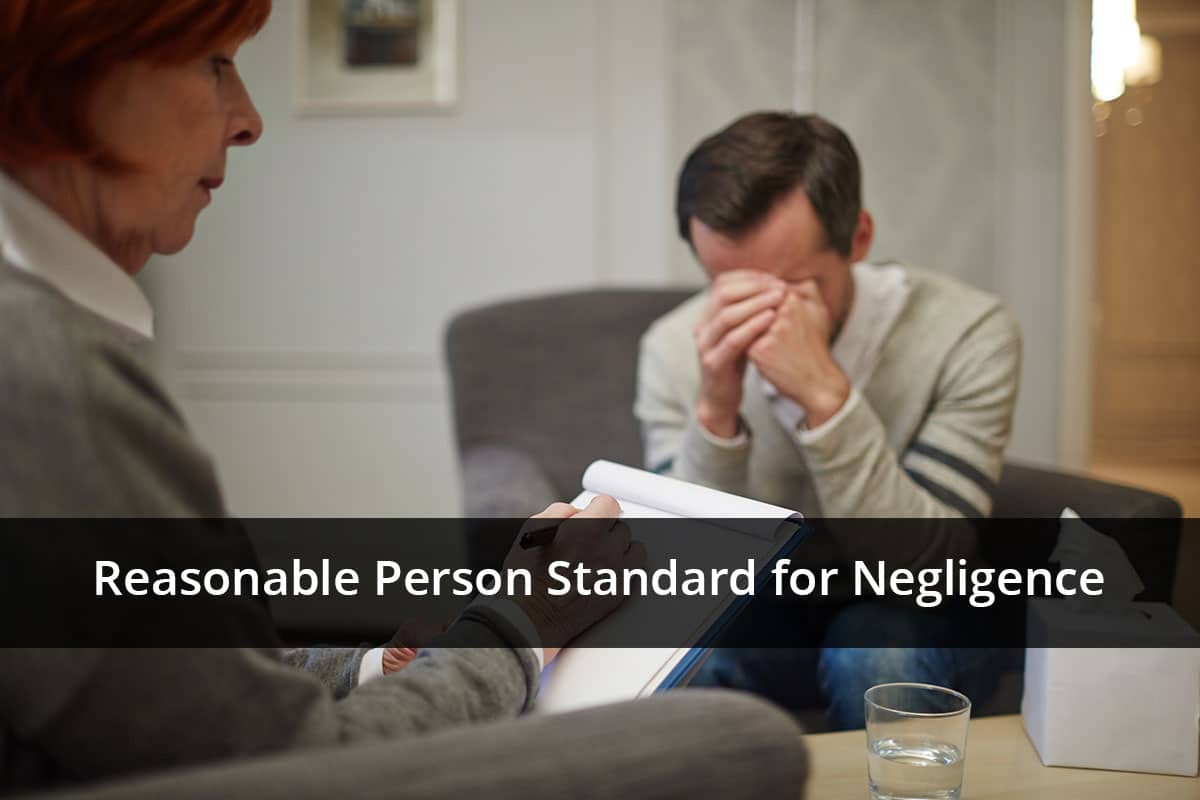When something terrible happens, people look for someone to blame. But is it possible that the wrong thing just happened without anyone directly causing it?
Can we assign blame fairly and objectively?
In negligence cases, these questions are answered by referring to the standard of care. The standard of care is an objective measure of what a “reasonable person” would do in a specific situation.Â
If someone fails to meet this standard, they can be held liable for any harm that results. This article explores the “reasonable person” standard for negligence.
What is a Reasonable Person Standard?
The reasonable person standard is a legal concept used to determine whether a person can be held liable for their actions. They base the standard on the idea that a reasonable person would act in a way deemed acceptable by society.
This means that if a person acts in a manner deemed unreasonable, they can be held liable for any damages or injuries resulting from their actions.
The reasonable person standard is used in different areas of law, including negligence and criminal law. In civil cases, the standard is used to determine whether a person can be held liable for their actions.
In criminal cases, the reasonable person standard is used to determine whether a person can be found guilty of a crime.
Determining Whether a Person Met the Standard of Care
The first step in a negligence case is to determine whether the defendant met the standard of care. If they did, you could lose your case even if you can prove that you suffered damages due to the defendant’s actions.
The judge and jury will consider the facts and circumstances as they existed at the time of the incident to determine whether the defendant met the standard of care. The judge and jury must also decide what a “reasonable person” would have done in the same circumstances.
However, we must also remember that the reasonable person standard applies to everyone, not just the person you are suing for negligence.
Therefore, if you are bringing suit for negligence, you must show that you acted as a reasonable person would have reacted in the same situation.
What is the Reasonable Person Standard for Negligence?
The reasonable person standard for negligence is the most commonly used standard of care in negligence cases. The standard of care is essential in negligence cases because people who cause harm to others must be responsible for their actions.
The standard of care helps determine whether a person’s actions were negligent.
If the person did not meet the standard of care, they could be held liable for damages caused by the negligence. The industry or profession often determines the standard of care.Â
For example, doctors must meet a higher standard of care than other people because their actions can have severe and deadly consequences for patients.
The following factors determine the standard of care for negligence:Â
- The type of situation in which the person is placed, such as the environment or situation.
- The person’s ability, including their skill level, training, and experience.
- Whether the person was paying attention, whether they were distracted, and how careful the person was.
- The person’s ability to foresee the consequences of their actions.
- The risk of harm the person might cause.
- The duty the person has to others.
A Measure of Damages in Negligence Cases
In general, you can recover compensation for all damages that you suffered as a result of an injury due to negligence. Damages may include medical expenses, expected future medical expenses, lost income or wages, pain, and suffering, and loss of quality of life due to the injury.
Depending on the type of case, it is possible to receive full or partial compensation for damages.
In cases with a high degree of negligence, such as a car accident, you can expect to receive total payment for your injuries. In more minor cases, where the negligence is not as clear, you may receive partial compensation.Â
In general, the amount of payment you can recover is based on the nature and extent of your injuries.
Some injuries, such as a broken bone, are easy to measure. Others, such as pain and suffering, are more difficult to evaluate.
How Does Reasonable Person Standard Relate to My Personal Injury?
As discussed above, the standard of care is an objective measure of what a “reasonable person” would do in a specific situation. The standard of care for negligence can apply in various cases, including medical negligence, motor vehicle accidents, and workplace accidents.
Depending on the type of incident you were involved in, the judge and jury will decide whether the other party met the standard of care. If they fail to meet the standard of care, you may be able to recover compensation for your damages.
They can also use the standard of care for negligence to evaluate your actions.
Suppose you were involved in an accident, for example, and are being held partly responsible for the outcome. In that case, the judge and jury will use the reasonable person standard to evaluate your actions.
What is Considered a Reasonable Person?
In legal terms, a reasonable person is someone who acts in a way that a prudent person would under similar circumstances. The reasonable person standard determines whether someone can be held liable for their actions.
For example, suppose a driver hits a pedestrian crossing the street outside of a crosswalk. In that case, the driver may not be held liable if the pedestrian acted unreasonably by not using a crosswalk.
The reasonable person standard is not based on an actual person’s conduct but on how a hypothetical sensible person would behave in the same situation. This makes it an objective standard they can apply fairly in legal cases.
Unfortunately, while the reasonable person standard may seem like common sense, it often leads to different interpretations in different legal cases.Â
The difference in interpretation is due to many factors, such as age, experience, and knowledge which can affect how a reasonable person would act. As a result, the reasonable person standard is often difficult to apply in practice.
Reasonable Person Standard Example
Imagine that you are hiking in the mountains and you see a bear. A reasonable person in this situation would be cautious. The reasonable person would use proper hiking etiquette, avoid startling the bear, and attempt to avoid the bear’s path.
However, if the bear attacks you, causing you bodily harm, you may be able to recover compensation for your injuries. This is because the bear and its owner would likely be found to be negligent. To prevail in a negligence case, you must prove two things:
- that the other party owed you a duty of care, and
- that the other party failed to meet the standard of care.
If you can prove both of these things, you can recover compensation for your damages, including medical expenses and lost wages.
What the Court Looks for to Determine Reasonableness
The Court looks at many factors to determine whether a person acted reasonably.
However, the “reasonableness” standard is why juries are so important in personal injury cases.
What does reasonableness standard mean?
Juries are asked to put themselves in the shoes of a reasonable person and decide whether the defendant’s conduct was unreasonable under the circumstances.Â
The first factor the Court looks at is whether the defendant should have reasonably foreseen the risk of harm to the plaintiff.
If the answer is no, the defendant is not liable, even if their conduct was negligent.Â
The second factor is whether the risk of harm was significant enough that a reasonable person would have taken steps to prevent it. This is often referred to as the “likelihood and severity of the damage.”
If the answer is no, the defendant is not liable.Â
The third factor is whether the cost of preventing the injury was small compared to the amount of harm caused. This is often referred to as the “cost-benefit analysis.”
If the answer is yes, then the defendant is more likely to be found liable.Â
The fourth factor is whether there were any public benefits to the defendant’s conduct. For example, if a truck driver was speeding because he was trying to make a delivery on time, that might be considered a public benefit.Â
On the other hand, if there were no public benefits, then the defendant is more likely to be found liable.
There are some exceptions to this general rule.
For example, mental disability, physical disability, children, and superior skill and knowledge can all be factors that make a person’s conduct more or less reasonable under the circumstances.
Contact Stoy Law Group, PLLC.
The reasonable person standard is vital to personal injury law because it helps to determine whether a person meets the required standard of care.
If you are injured, you may be able to receive damages depending on how the injury occurred.Â
To learn more about your case and how the reasonable person standard applies, contact an experienced personal injury lawyer in your area.














